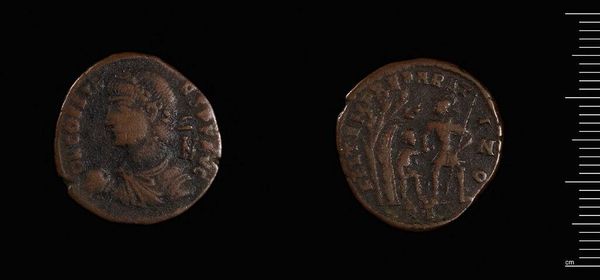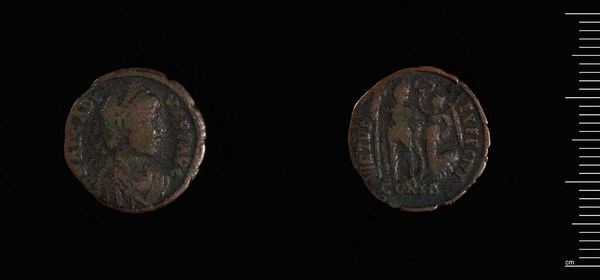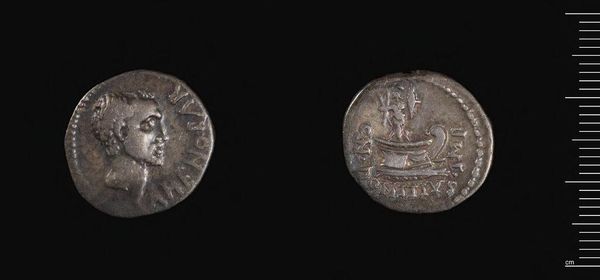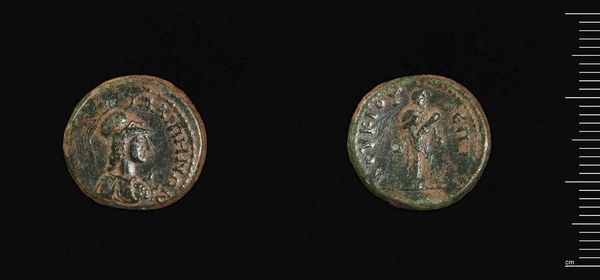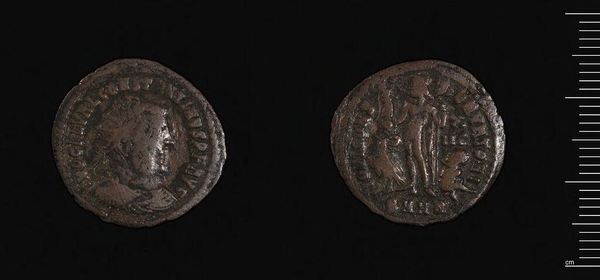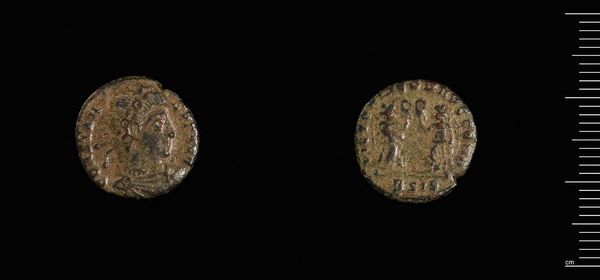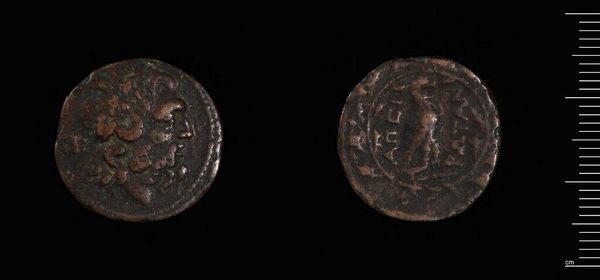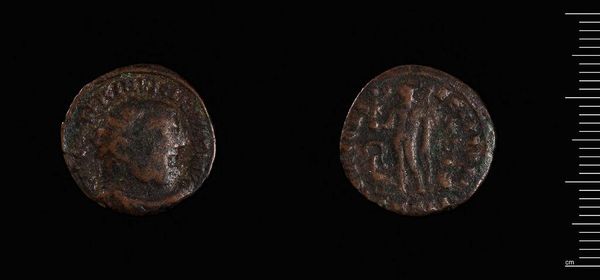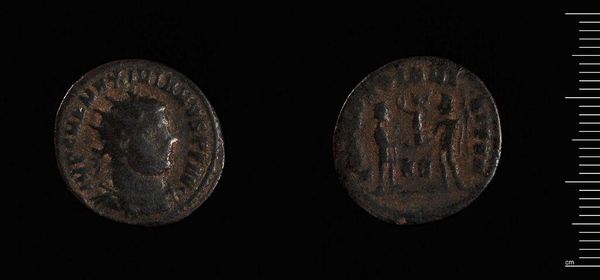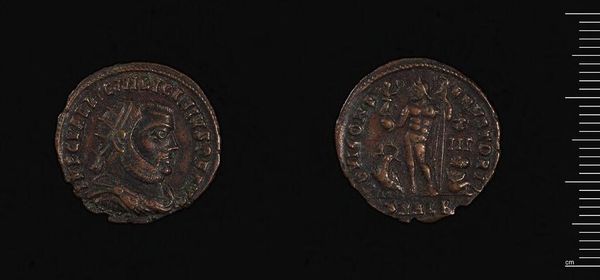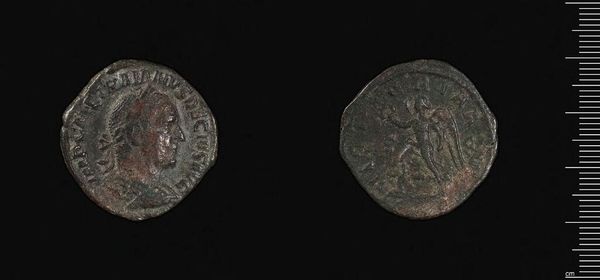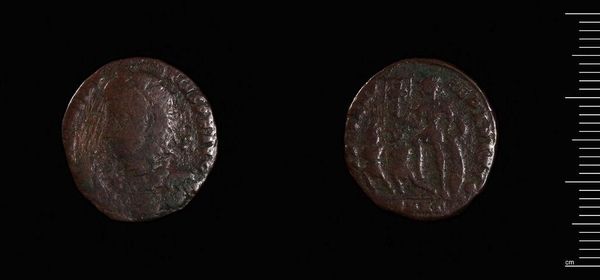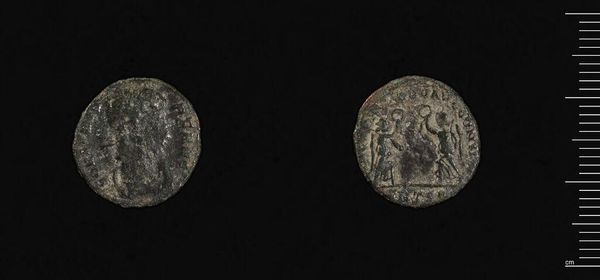
Dimensions: 3.16 g
Copyright: CC0 1.0
Editor: So, here we have a Follis of Licinius II from Antioch. It's a small coin, looks like bronze, and you can see wear from handling. What can we learn about Roman society from an object like this? Curator: This coin’s materiality speaks volumes. Bronze, a readily available metal, signifies widespread production and circulation. Consider the labor involved: mining, smelting, striking the image. It’s a state-controlled process, designed to legitimize power through standardized imagery. The coin’s condition—worn, circulated—reflects daily use and economic exchange, embedding imperial power within the mundane. Editor: So, it’s less about high art, and more about how things were made and used? Curator: Precisely. The "artist," Licinius II, isn't concerned with artistic expression in the modern sense, but with the material assertion of imperial control and the regulation of exchange. We learn about the distribution of resources and the relationship between the state and its people. Editor: That’s a fresh way to look at it, beyond just portraits and symbols. Curator: Absolutely! This coin becomes a tangible record of economic activity and social structures.
Comments
No comments
Be the first to comment and join the conversation on the ultimate creative platform.
